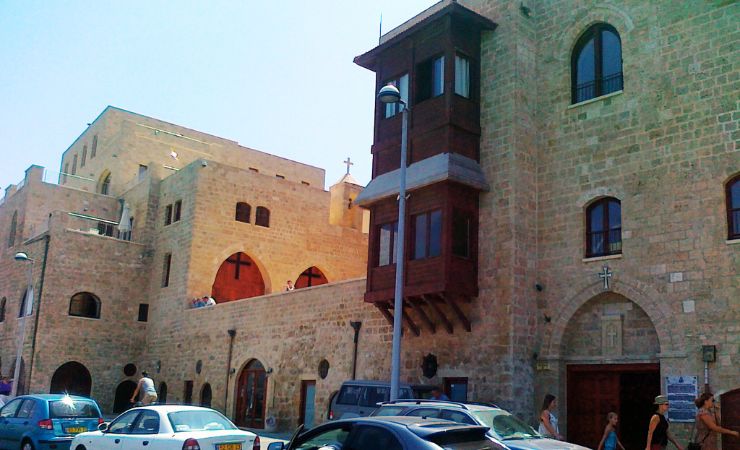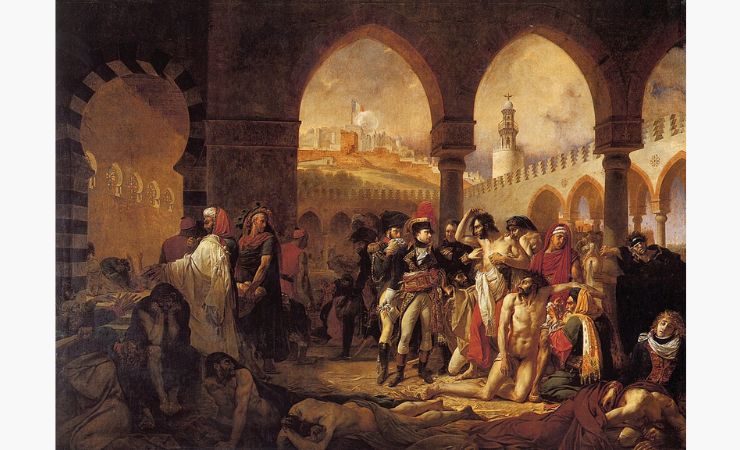St. Nicholas Armenian Church in Jaffa
St. Nicholas Armenian Church is nestled in the historical heart of Old Jaffa in Tel Aviv, Israel, is an example of ancient Armenian architectural tradition, established sometime in the first millennium AD. The church is part of the Saint Nicholas Monastery, which has been significant both spiritually and historically to the Armenian community.

Location
St. Nicholas Armenian Church is strategically positioned near the Jaffa harbor, overlooking the serene Mediterranean Sea.



Early History and Establishment
St. Nicholas Armenian Church is part of the larger St. Nicholas Monastery complex, which was established in the first millennium AD. The exact date of foundation is not clearly documented, but it is evident that the monastery has been an integral part of the Armenian Apostolic Church for centuries, serving as a spiritual and cultural center for the Armenian community in the region.
The Crusader Period
During the Crusades, Jaffa was a significant port city, and the monastery likely played a role in serving the Armenian pilgrims and crusaders who passed through the area. Its strategic location near the harbor would have made it a vital point for supplies and refuge.
Ottoman Era and Napoleon’s Influence
The most notable historical highlight came at the end of the 18th century during Napoleon Bonaparte’s campaign in Palestine. In 1799, during the siege of Jaffa, Napoleon used the monastery to house his troops who were struck by the plague. This episode is famously depicted in the painting “Bonaparte Visiting the Plague Victims of Jaffa” by Antoine-Jean Gros. This not only highlights the monastery’s significance at the time but also its role in broader historical events.
Modern Times
In more recent history, the monastery has seen various uses. The Armenian Patriarchate of Jerusalem, which oversees the site, has rented out parts of the complex for residential and commercial purposes. This adaptation has helped maintain the financial stability of the monastery, ensuring its preservation and continued use as a place of worship and community gathering.
The historical trajectory of St. Nicholas Armenian Church mirrors the tumultuous history of Jaffa itself, marked by periods of conflict, cultural exchanges, and transformation. This makes the church not just a religious site but also a historical monument, offering insights into the survival and adaptation of a community through changing times.

Sources and Additional Information
SlavaGuide – The Armenian Church
Armenian Patriarchate of Jerusalem
Nearby Sites
- Jaffa Old City: Just steps away, this ancient enclave is a labyrinth of galleries, boutiques, and cafes, perfect for a leisurely exploration of local art and cuisine.
- Simon the Tanner’s House: Traditionally believed to be the home of Simon the Tanner, this site is significant in Christian history as the place where Apostle Peter had his vision, as described in Acts 10.
- Jaffa’s Clock Tower: Built in 1903 to honor Sultan Abdul Hamid II’s 25th anniversary of his accession to the throne, this clock tower is an iconic symbol in the center of Jaffa, marking the Ottoman architectural presence in the city.
- Jaffa Port: Known as one of the oldest ports in existence, it now hosts a variety of artistic and social events, alongside a vibrant marketplace.
- Jaffa Flea Market: A treasure trove for bargain hunters and antique lovers, the flea market is a bustling hub where history meets modern-day trade.



